“So, what do you do to work out?”
“Well, I uh… I um… I’m a physical education/dance teacher and I do Crossfit.”
These are my “safe” answers, and they usually surprise my audience. You see, I don’t look like what most people picture in their heads when they think of a P.E. teacher. I’m under 5’5 and a woman of color; I don’t think I have to explain how that does not fit the prototypic mold. If the conversation continues from here and stays on the topic of my exercise or dieting habits, we get to the “What else do you do?” questions or, “When you’re not at Crossfit or work, how do you spend your time?” (Dating made these questions arise even more frequently.)
That’s the reason for the stutter in my response, because what I’m really thinking is: How can I say this? I’m terrible at feeling out people in regards to how they’re going to respond to this… should I tell them? Where will the conversation go? “I pole dance.” The responses have been extremely varied, from potential romantic partners to family members, I still honestly never know what I’m going to get. It usually starts with, “You what?” and I say, a little more confidently this time, “I pole dance.”
“As in like… what does that mean exactly?”
“But not like a stripper, right?”
“I’ve heard that’s the new big thing!”
“I have a friend who did that, they loved it!”
“I’ve heard that it’s actually REALLY hard!”
“I mean, the people in Cirque du Soleil are on poles sometimes!”
“Oh. Wow. That’s…Wow.”
“Really? That’s hot.”
Oh and I am just as socially awkward when it comes to telling new people in my life (or even just at a party when these topics come up), that I in fact own a pole and have one in my apartment (my family loved it at Christmas. No seriously, even grandma got on it. Everyone loved it, aside from my dad who ignored its existence after asking what it was and what it was for).
Anyway, the point of you reading through that introduction was to get you invested in the person writing this, because pole dancing means a lot to me. It has changed my life in so many ways, but I will explain more about that after giving you some pole dance 101.
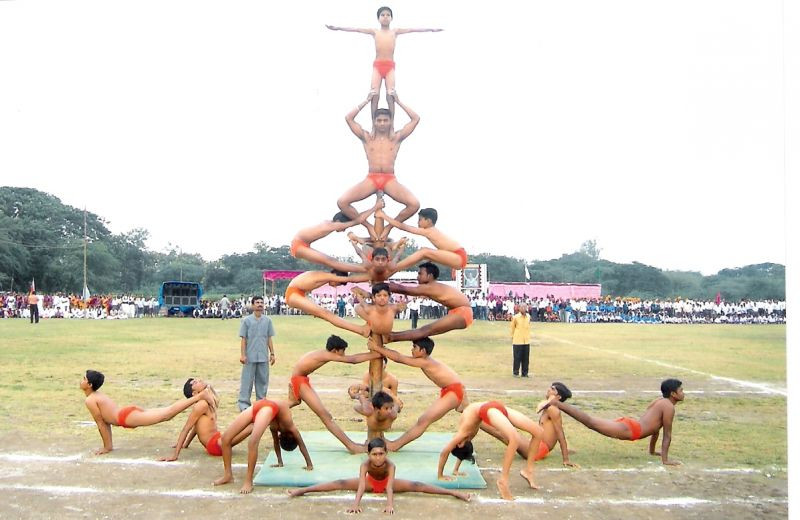
image source: IndianSchoolNews.com
The Beginnings of Pole
Usually if you ask anyone in this community where pole started, they’ll tell you that it was something else way before it was in the strip clubs. To many, the story begins in China. “Chinese Pole” dates back to around the 1100s. The poles that were used at this time were usually around 3-9 meters high (9-29 feet) and wrapped with rubber. Nowadays the poles can go up to 30 feet (9 meters) high, and 2 to 3 inches (5 to 8 cm) in diameter. The performers were fully clothed, and had incredible upper body strength in order to hold themselves up, creating a 90 degree angle with their bodies and the pole. Aside from that famous “flag” pose, performers climb up and down the pole, sometimes using the bottom of their feet as well. They slide down the pole, flip and jump into positions or even on to another pole, where they use that amazing strength to hold a shape they create with their bodies. Although people tend to separate pole dancing from the likes of Cirque Du Soleil, they are birthed from the same place.
Mallakhamba, known in English as Indian pole/gymnastics, has also been said to be where pole dancing originated, and is first recorded as existing in the 12th century as well. In this sport, wrestlers used the wooden pole coated in oils to train and compete against one another. Performers/competitors climb and flip into poses they would hold to exhibit and train to increase their levels of concentration, coordination, endurance, reflexes, speed, stamina, and strength.
The pole itself usually has a base diameter of 55cm and thinner diameter of 35cm at the top, standing at 2.6 meters (8.5 feet) in height. Similar to the kind of pole popular in the west today, performers wear little clothing in order to be able to allow their skin stick onto the pole apparatus. There are still national Mallakhamb championships running today. The competition involves 14 states in India, and on April 9, 2013 was declared as the State Sport. Mallakhamb is a male dominated sport. From 12-year-old boys to men over 17, they can all be active in different age groups. The only people who do not participate? Women.
In both Chinese and Indian pole, many participates will add to the props used (aside from the pole itself), such as ropes, to allow performers to create different poses and shapes. In both of these types of pole it is common place to see two or more performers on a pole at once.
So all that history aside, we know that in the west, many of us had our first exposure to pole dancing through the erotic dancer. That’s right, the stripper, taking off her clothes for money, shaking it (twerking while she’s working or rather… werking), walking around a pole, and more often these days, showing off athletic feats, defying gravity. With sharing all these positive aspects, I would be amiss to ignore rifts in the pole world. No family is perfect, and in this world the biggest battle seems to be that of the relationship between pole dancing and sex. Many people now choose to call pole dancing, “pole fitness” in order to separate what it is that they do from that of strippers in a club.

image source: imgkid.com
The “striptease” can be dated back to myths of ancient Sumerian times and the goddess of love, Inanna. Within the mythological writings Inanna, on a journey to find her lover Damouz, danced her way through her descent to the underworld while removing one item of clothing or jewelry at each of the eight gates she encountered. Other influences are said to be the Moulin Rouge in Paris, belly dancing of the Middle East, and also the Rumba and Tango of Latin cultures. HOT!
In the west, pole dancing has been said to originate during the Great (American) Depression of the 1920s. There were traveling fairs where groups of dancers would entertain audiences with “suggestive” hip movement-focused dancing. They became known as the Hoochie Coochi (my – how those word’s independent definitions have changed! Well, maybe not at all…) dancers and they would often dance on the pole which held the tent up!
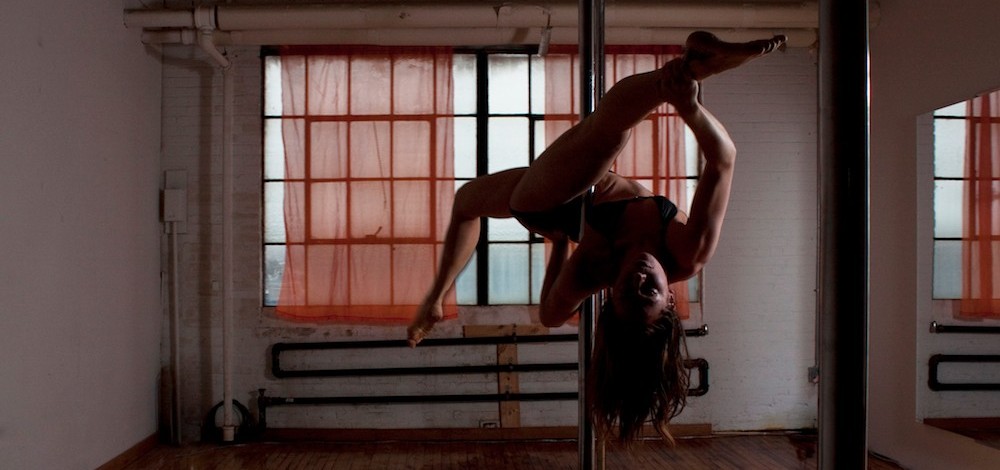
image source: Nicole Duquette
Pole Dancing Today
Today pole dancing for some is a multi-million dollar business. Aside from owning studios that teach pole and other aerial skills, there are companies that sell poles for not only the club and studio but the home. The poles now used are made of different metals such as stainless steel, brass, chrome, gold, as well as metals wrapped in silicone. The standard diameters are 40, 45, and 50 mm but there has also been an emergence of 48 and 53 mm poles with the inclusion of the silicone. The heights are fairly limitless these days. X-pole (the brand of pole in my home, no the company did not pay me to include that but yes that is the brand most of us in my little pole family own) has poles for the home and studio, which start at the adjustable height of 7′ 4″ to 9′ feet and can have added extension pieces that can go up to close to 12 feet. The emergence of studios where people can go to learn and practice their pole dancing skills has brought back the Chinese pole days of towering poles, many studios having 15-foot high ceilings.
Many poles now spin. There are lots of people who have not tried spinning poles for themselves and believe that is should be counted as “cheating” because the pole spins independently from the dancer/athlete. Thing is, think of some basic physics and you can realize that a spinning pole can be more difficult, calling for the person to use more strength just to hold on! There are even some poles that have just a stage or floor attached to them that can even allow one to pole outdoors!
Pole dancing and pole classes, studios, competitions and training spaces have opened all over the world, most notably in the United State of America, Australia, Asia and Europe. A typical pole dance class begins with a warm-up, which many people have referred to as “sultty yoga” (with no disrespect intend at all, to many, sensuality does not have to lead to sexual intercourse of any kind! Although, the “slut” word is off-putting to many.) The purpose is to warm the body up in areas of flexibility, strength and maybe some confidence as well. Then the warm-up on the pole has conditioning aspects as well, pole crunches included! Gradually, the class will work its way up to spins, climbs and inversions, which are what puts pole apart from (ahead of?) the pack within the world of exercise and fitness.
When it comes to pole dancing’s erotic components, many people argue that sexualized dancing cannot be seen as empowering because of the many women marginalized by erotic dancing.
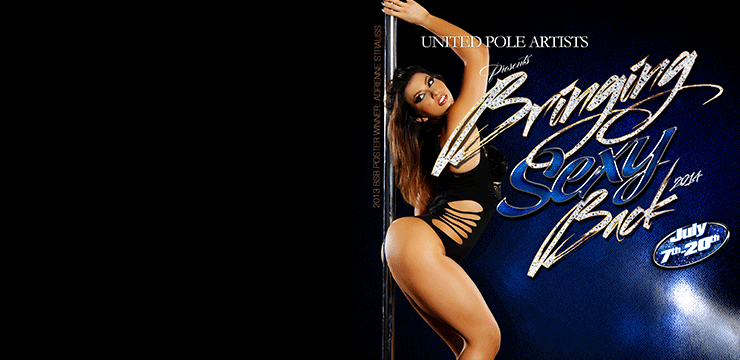
image source: United Pole Artists
Then there is “Bringing Sexy Back” week from United Pole Artists, which celebrates the sexiness many associate with pole dancing.
From their website:
“What is Bringing Sexy Back?
A two-week celebration of YOUR version of sexy pole dance. A time for all pole dancers to come together and share what makes them feel sexy. Throughout the two weeks, pole dancers are encouraged to make videos, take pictures or share stories of feeling sexy. Our goal this year is to double the amount of participants from last year. UPA will be sharing videos and pictures everyday on our Facebook and Twitter pages.”
Another celebration of skill and fitness as well as sexy is “Dangerous Curves: A Celebration of Plus Size Athletes, is the wildly popular pole dancing competition for plus size athletes created by Roz “The Diva” Mays. Eight competitors from around the nation will be selected to dance their hearts out in front of a live audience in New York City. A panel of judges will decide on the top three dancers, and the crowd will ultimately determine who has The Most ‘Dangerous Curves.’”

image source: Pole Sport Organization
Outside of the sexiness there are The World Pole Dance Championships and Pole Sport Organization’s many competitions! What if I told you that many people expect that pole dancing will soon become an event in the Olympics? There are so many competitions around the world that now have very strict regulations (such as the ones mentioned) that have rules on everything from the displaying of gluteal folds, or any other “intimate body parts,” to the number of required moves that must be within a routine.

image source: elevatED
& Xpert Pole
There are even workshops to ready any pole hungry person for the world of becoming a pole educator. There’s X-pert Pole Fitness, the child of Crunch (gyms) and the X-pole company, as well as Elevat-ed (both of which count towards American Council on Exercise (ACE) credits) which train people on everything from how to spot a pole student to how to physically set up a pole studio.
So today, modern pole is a combination of these centuries old techniques and more. Modern day pole dancing relies heavily on dance as well as fitness skills. And, well, pole dancing is everywhere, from TV and movies to comics and video games! For instance, there is the web-comic “Pole Dancing Adventures” created by artist, Leen Isabel. This illustrates her journey as well as the collective “pole dancer problems” of us all. Another webcomic that I adore did strip about pole (this comic is NSFW and for 18+ readers), Erika Moen starts the comic strip by exclaiming “I have never been athletic.” It goes on to rave about her pole studio and pole dancing experience. In the video game Bayonetta the game’s namesake and protagonist uses pole dancing as a means to combat her foes. In the ending credits of the game, Bayonetta can be seen dancing on the pole. If you get a platinum award you can even hear her proclaim, “I should have been a pole dancer.”
So, what does this all mean for me? What has this done for me?
For me, pole dancing has most definitely been one of the most empowering things I have given to myself. I walked into my first pole class just knowing I would be pretty darn good at it. There was this one move the instructor had us all try, where you are sitting on your knees and have to use your abdominal strength to pull your feet from underneath you, allowing you to stand on your toes with the space between your shoulder and neck pressing against the pole, holding on with your hands. “I’ve got this!” I thought. I did not; I did not have that, not at all. I’ve been a dancer and athlete for almost all of my life (since the age of three) and I had met an unexpected challenge. I couldn’t do something, so I went back. That instructor is now one of my dearest friends, and I have called myself a pole dancer for over two years. Pole dancing and the #sacredpolefam (look it up on Instagram!) has seen me through terrible break-ups, losing my first (real) teaching job, life altering health issues, as well as the best of times. My studio just decided to end its pole program, and I really have no idea what I will do with myself in regards to my pole training. My family and I, we feel a bit lost, pole is so much more than the fitness and erotic aspects, but we have each other now… and our poles at home.
Writing this article felt extremely daunting but I am glad that I was asked to do it now… pole is only just beginning. Its history goes back hundreds of years and it is not going anywhere. I did not even get to tell you about the swinging poles (Google it already!).
Featured image source: gunsandgames.com

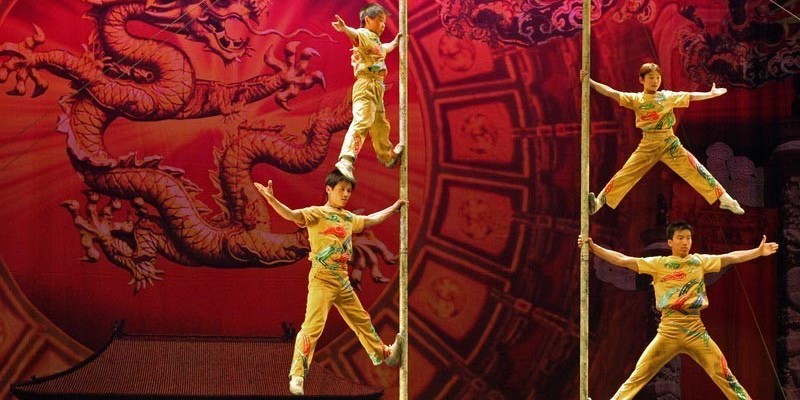


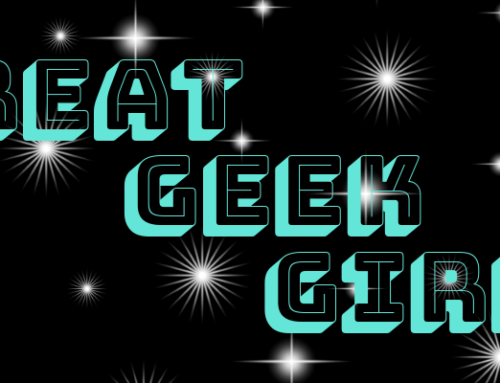
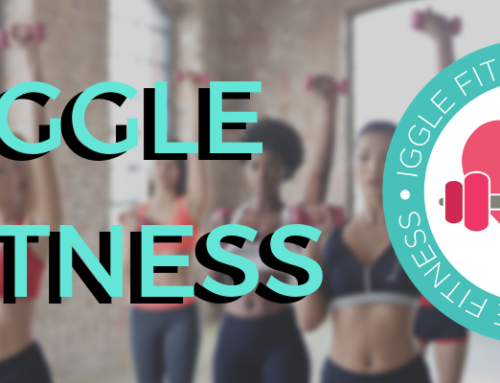
Leave A Comment
You must be logged in to post a comment.